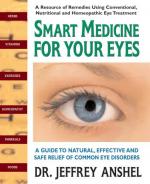|
This section contains 587 words (approx. 2 pages at 300 words per page) |

|
Nearsightedness (myopia) and farsightedness (hyperopia) are vision problems. People who are nearsighted see objects clearly when they are close to the eye, while distant objects appear blurred or fuzzy. Symptoms of hyperopia can vary from no visual problems at all, to clear distance vision combined with blurry near vision, to blurry distance and near vision.
To understand nearsightedness and farsightedness, it helps to know something about the main parts of the eye's focusing system: the cornea, lens, and retina. The cornea is a tough, transparent, dome-shaped tissue that covers the front of the eye, lying in front of the iris (the colored part of the eye). The lens is a transparent structure located behind the iris. The retina is a thin membrane that lines the rear of the eyeball. Light-sensitive cells in the retina convert incoming light rays into electrical signals that are sent...
|
This section contains 587 words (approx. 2 pages at 300 words per page) |

|


